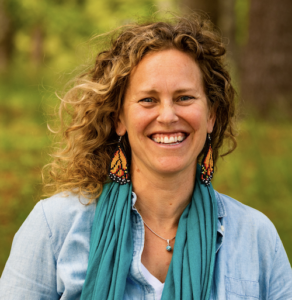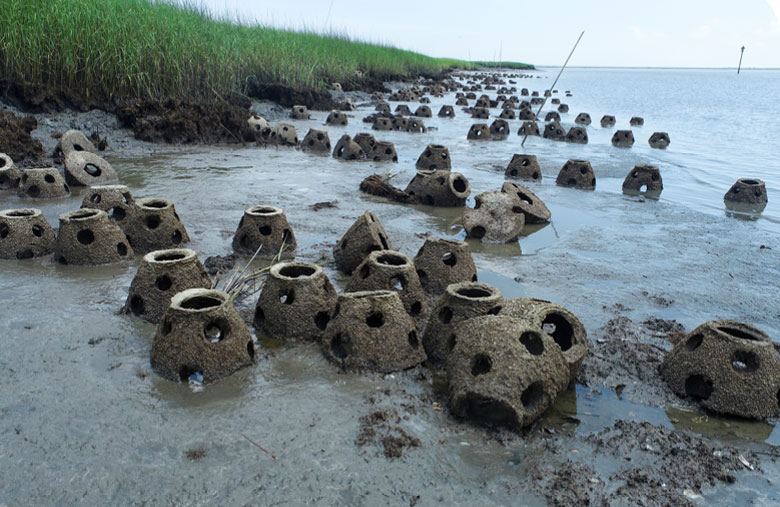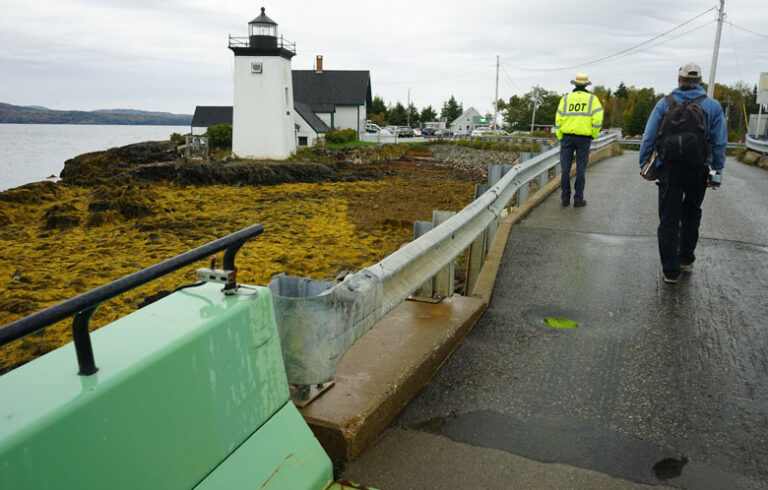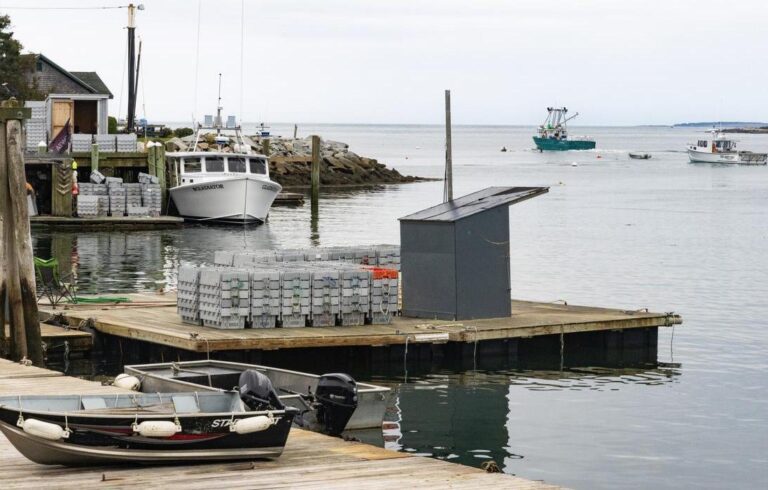When you step off the ferry onto Great Diamond Island, you might notice the inlet carved into the land past the rip rap. That inlet is the result of the “hardened” shoreline. Camp Ellis in Saco has seen its beach erode and disappear after a vertical bulkhead was built in the 2010s.
Many municipalities and private landowners are increasingly interested in an alternative—nature-based solutions. These approaches to shoreline erosion use nature and natural processes to protect people, infrastructure, and the environment.
They provide hazard risk reduction, benefits to ecosystems and habitats, and can help provide clean water and space for recreation and wildlife.
Engineered “dynamic cobble revetments” mimic a natural cobble beach and stabilize the shore, creating an impact zone that absorbs the ocean’s energy…
“Living shorelines,” or protected, stabilizing coastal edges made of natural materials, have become synonymous with nature-based solutions, since they trap sediment and allow plants to grow and provide wildlife protection. But there are many other examples of nature-based solutions.
These include:
• artificially-made oyster reefs or 3D-printed exoforms used to dissipate wave energy in shallow water
• preserving and restoring dunes, which a 2017 study found prevented over $625 million in direct property damage after Hurricane Sandy
• using rows of Christmas trees to trap sand and stabilize shorelines, as the state currently deploys at Popham Beach State Park.
It can be tempting to imagine that nature-based solutions are a panacea for coastal erosion, but marshes face a serious challenge: many cannot accrete, or accumulate enough sediment to stay above rising seas.

Maine now has a sea level 8 inches higher than a century ago. According to the Scientific and Technical Subcommittee report of the Maine Climate Council, that additional water is what made the difference between a manageable surge and the impacts experienced in the January 2024 storms. The U.S. Army Corps of Engineers has tried to address this with beneficial reuse of dredge materials, but this can be expensive while trading current negative impacts for future gains.
Whether coastal infrastructure is gray or green, large or small scale, it doesn’t stop the water from rising. A 2022 national assessment of the effectiveness of this approach stressed that nature-based solutions should be considered in how people and ecosystems move as the shoreline changes. Nature-based solutions projects provide an opportunity to have conversations about how the coast can work for current and future residents, visitors, and ecosystems.
What if a shoreline is all ledge and stone, like much of Maine? In areas like the backshore of Peaks Island, a cobble beach is the only defense for a shoreline road.
Fortunately, solutions like engineered “dynamic cobble revetments” mimic a natural cobble beach and stabilize the shore, creating an impact zone that absorbs the ocean’s energy by moving with it. This requires maintenance, and practitioners stress that engaging a coastal engineer during construction is critical in high energy environments like those on the Maine coast.
With good planning and maintenance, solutions can also integrate working waterfront infrastructure for hybrid “gray-green” approaches.
There have been plenty of barriers to nature-based solutions, but one of the most common is an existing regulatory framework made for hard infrastructure, in which engineers and landscape architects do not have the assurance that the state will support them in putting their stamp on nature-based solutions.
In Maine, the Department of Environmental Protection is leading in addressing this challenge with proposed rule changes, the OUR SHORE guide and program, and the ShoreCorps fellowship, providing the training and capacity to help municipalities assess, design, and test nature-based shoreline stabilization projects.
Finally, the greatest barrier to implementation has been social. There are thousands of examples from around the world, but what practitioners have found works best to show landowners the benefits of nature-based solutions is social proof—a project in your neighbor’s yard.
No solution can stop the tide, but it’s those local projects that will lead the way to scaling up hybrid and nature-based solutions that protect people, places, and the ecosystems on which we all depend from more severe storms.
Jessica Reilly-Moman is director of Island Institute’s Center for Climate and Community. She may be contacted at jreillymoman@islandinstitute.org.





